This is my first attempt at making a really simple audio amplifier. The schematics are below:-

First I tried connecting the circuit to a 9V battery. (Multimeter reads around 8.3 Volts, which is in the operating voltage range of the LM386 as per datasheet) The result I have is lots of noise, sometimes cracks and pops and a barely audible sound of the audio input (it feels like highly attenuated form of input which is very bad). It doesn't even sound at least equal to the input! I want the gain to be around 200, so I do have a 10\$\mu\$F capacitor across pins 1 and 8 of the LM386.
I've also tried connecting to a 9.6V - 250mA rated unregulated DC adapter. The results are almost the same... (though I seem to get a higher voltage here..)
Initially I simply used a in-ear earphone to pick up the mono output. I also tried connecting a small speaker (pictured). It's apparently a 0.2W 8\$\Omega\$ speaker. The output is low, but the end result is similar to the earphone output..
Here's a snap of the breadboard.. Sorry for the bad quality pic. This config used the DC adapter and a 0.2W 40\$\Omega\$ speaker. I even checked all parts for continuity using a multimeter. I'm also open to tips on troubleshooting this, since I'm new.

Top bus is the Vs and the bottom bus is the common ground. Input audio is connected to the left end of the 'green' 1k resistor. Its a very thin wire since its from a small 3.5mm TRS cable.
I don't want anything super loud, just audible maybe like 2x of the input signal. If so, what kinds of speakers would this amp be capable of driving? What would I need to make it sound acceptable? Basically, what's wrong with this circuit?
UPDATE: I followed all of your suggestions and my setup now consists of an additional 100\$\mu F\$ capacitor in parallel to the power, a 100nF capacitor in series to the input audio signal and a 10\$\mu F\$ capacitor connected to the bypass pin. There was a problem though, the 9.6V unregulated adapter I use seems to show 22 Volts on the power rails (under load).. this seemed to make the LM386 run really loud. I seem to hear the amplified audio at times when I nudge some parts here, but anyhow after sometime, the IC got too hot and so did the 100\$\mu F\$ capacitor at the power supply.

I can't really tell if it's all because of a bad quality adapter or the IC or breadboard or capacitors.. The capacitors were salvaged from an old PCB board of another circuit. Also since I think the last LM386 got fried, I desoldered another LM386 from another board and I'm keeping it in stock. This is the last 386 I have in hand now and I don't wanna screw this up.
Now for safe testing, I drew power from laptop USB (5V regulated).. the volt at pin 6 of the new 386 shows a solid 5V. Speakers were really quiet so I hooked this up to an AUX cable and listened to it.. The output is weird and not satisfactory.. The sound seemed to be amplified when I nudge the power cable at pin 6 (ie, peaks of loud sound happens only at the beginning and then it fades to a point; see attached image/sound of the Line in recording)
(Using no cap at pin 1 and 8)
 Sound Clip
Sound Clip
UPDATE-2: I seriously doubt the volume level output of this amp.. through the speakers, I don't think it plays it loud enough.. the signal sounds sort of 'amplified', but the speaker doesn't seem to output it loud. Btw, I tried 9V batteries, 9V battery with 5V DC, 7.8V DC, 5V DC all sound the same. Is it because of my speakers? Also thanks to everyone who suggested adding extra caps to the power rails.. that part really helped in filtering a lot of noise. I used a 10\$\mu\$F cap there along with the 100nF cap. Or does adding more caps cause power loss or something?
